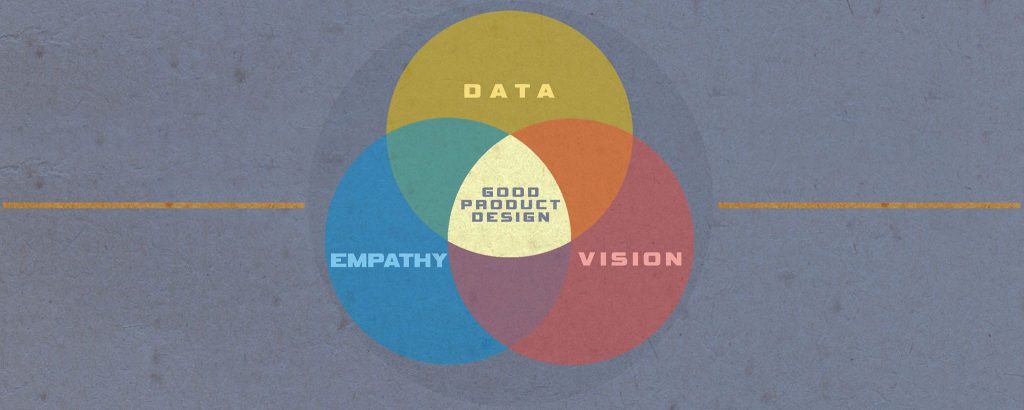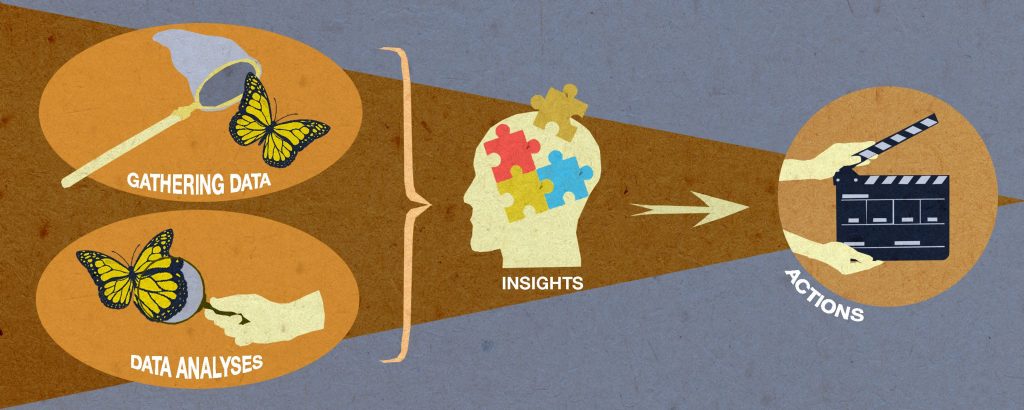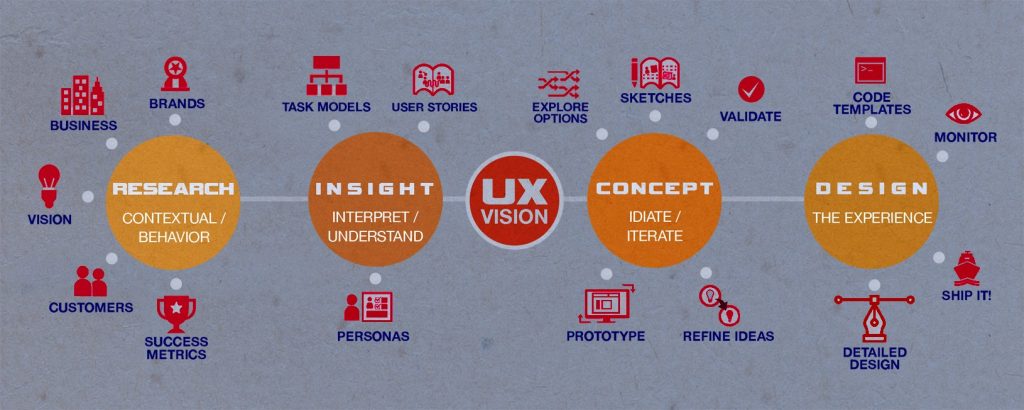The focus on customer experience management is growing. A few years ago, product design was often up to the vision and intuition of the designer. Today everything is different.
Currently, product design is built on feedback and information gathered from the user. Solutions are increasingly built on analytical rules, complementing and guiding the intuition of designers and product managers. Data forms the cornerstone of all product development. Thanks to them, we can achieve significant improvements in customer experience faster. We increase the level of customer satisfaction and the level of customer identification with the brand. Today, this work does not fall solely on the shoulders of the designer – it is carried out by entire departments or teams made up of both internal and external members.
Focusing on data and user experience has also changed our view of marketing. Flow marketing goals and metrics no longer end with sales, but go far beyond that. We are interested in the actual benefit that the customer receives from the product. We try to understand its subjective evaluation and use. To be successful in this challenging process, we need data. In this article, you will learn how we incorporate data into key parts of the design process.
Why do we need data?
Steve Jobs said an interesting phrase “It’s really hard to design successful products based on the outputs from the target audience. People often have no idea what they might want until you show it to them. “This phrase is definitely true, but it doesn’t apply to most product development. This statement may confuse us. Steve Jobs was not a designer. Steve Jobs was a visionary. It was heavily focused on creating new product categories and disruptive technologies. While its path may be good for visionaries who are creating new markets, this path is difficult to apply and limiting for product development that is trying to succeed in an existing market. So let’s distinguish the creation of a new product segment from product development aimed at successful product market placement.
If you are creating a new product in an existing product category, your users already have a lot of experience and important requirements that customers want and need. It would be a mistake not to use this valuable source of information. If you hired the best designers in the world, even they wouldn’t be able to predict what customers want – simply because they are designers and not users (the exception might be a product for designers). It is a mistake to think that a designer will understand exactly what users want and need without specific user research or without real data or testing. Obviously, it is inefficient to make decisions without information from users, only according to one’s own intuition. We need to get the necessary body of knowledge into the development process, only then can effective product development begin with the goal of achieving a competitive user experience in a reasonable amount of time.
Defining Data-Driven Design
Data-Driven Design sounds like a big buzzword, but what does it really mean? Data-driven design allows you to drive many of the decisions that determine a product’s success rate. The goal of Data-Driven Design is to better understand the day-to-day use of the product by the user.
You may have noticed that I look at customers (and this is true for any type of product) as users, so I research their user experience. It’s becoming clear how important it is to stretch communications beyond the normal boundaries in our marketing objectives. At first glance, it seems pointless to spend resources on communication after I’ve already sold the product (especially for products that a user buys once or twice in a lifetime). From a data-driven marketing perspective, it’s quite different. We have targeted our product through marketing to the segment where we want to be successful. Only part of the audience responded positively to the offer. By closing the sale, the customer can be contacted. The moment all of this can be capitalized on and detailed information can be obtained to refine marketing targeting and more precise information to tailor the product more attractively to the customer’s needs, we make the mistake of stopping communication and throwing all of these opportunities in the trash.
Quantitative and qualitative data
So let’s try to continue the communication with the user. Before we get right into Data-Drive design, we need to be clear about whether we understand what can be considered data. In general, we can collect two types of data:
:: Quantitative data: these tell us what is happening (or not happening). This is usually numerical data.
:: Qualitative data: these tell us why this is happening. This is usually non-numeric data.
Most analytical tools provide quantitative data. They show us who, what, when and where. For example, in the context of websites, Google Analytics tells us how many visitors come to the site, how they got there and what actions they take. What the data doesn’t tell us is “why”. “Why” do a certain group of users do one action while another group prefers another? The “why” is a very important consideration because it opens up the mystery of user logic. To know the causes, qualitative data needs to be examined. Is qualitative data better than quantitative data? Absolutely not! In fact, we should never trust only one type of data. Using the two together to really understand our product is the usual practice. Armed with quantitative and qualitative data, we can make more informed decisions. While quantitative data tell the story of status and development, qualitative data offer a more abstract view in a broad perspective. For example, we can evaluate quantitative user data to see how heavily our product is currently being used. If this value does not meet our expectations, we need to investigate elsewhere and turn to qualitative feedback to understand the causes of the problem. The data will help us formulate hypotheses about the problem and its solution.
3 main parts for Data-Driven Design
To use data to inform design in a meaningful way, we need to connect the dots between data and design improvements. We need to use data to identify specific user wants, problems and needs. The Data-Driven Strategy is composed of three parts. Their balance is important, as the following diagram illustrates.

1. Data
The first pillar of our future success is quality data. In the first moments, many may think they have no data. After a short reflection, however, we find that we can get a lot of interesting data from accounting, ERP system, technical support records, service, complaints and so on. We will not collect data for the sake of it. For our further work, you need to analyze the raw information and organize it into meaningful structure and insights. It will therefore be important to be able to identify the sources and prepare the infrastructure that will allow us to link important data sources for use in the analysis. The following recommendations may help:Expand the range of data. Data from multiple sources creates a more distinct picture and ultimately a more usable output. Use all data sources to create avenues for improving the user experience: analytics, A/B testing, contextual research, service records, social media data, surveys, interviews, user tests, support records, or other available sources.When collecting data, think about the product’s mission, this will help you focus on a key data area.Connect the numbers to the context. Don’t take “high-level” measurements, look for data points to answer specific questions. Remember, you need numbers and context to understand the real story. Look for meaning first, then look at the details.Use simulations and validate decisions and hypotheses through A/B testing and evaluate them responsibly.Measure the impact of all major changes. This often results in data-informed interactions – tracking changes over time and optimising the product based on data.Avoid the data glamour. Many teams are relying more and more on data to make decisions over time. Eventually they become paralyzed, unable to create something truly new. Don’t become one of them. Data should help you achieve your goal, but it should not define or re-define it without a comprehensive assessment of the entire product strategy.

2. Understanding
Not surprisingly, the ability to empathise – to step outside one’s own needs and perceive reality from other people’s perspectives – is at the heart of designing a meaningful product. To understand this, it’s important to know that data is generated by and about people, not machines. We need to see data as traces of human behavior. Look for human stories that make sense of the data:Look for data to understand what people say, do, think and feel. Find out what is important to them.Understand the emotional reasons why people do or don’t do things. Understand the user’s motivations and problems.When we understand the user’s perspective, we create products that are better suited for our users. One interesting example of using empathy in design is in Tesla’s design process. Tesla is able to present its technologies in a way that is innovative and interesting at the same time, but also familiar and understandable at the same time. The design concept behind the Model S is clean – created for quick identification with the product. When customers want to switch to driving an electric car, they need the car to feel traditional. This makes Tesla’s electric cars more friendly and acceptable. The process for achieving the necessary empathy can be supported by observing and interviewing users, analyzing surveys, and using more traditional research methods such as “diary studies” and usability testing. The ultimate goal is to be set on creating a product that people will love.
3. Vision
When we think about data in terms of design and innovation, we should think of data as something that helps guide our decisions – what to do next, but at the same time, we shouldn’t let data decide our strategic direction. Here are a couple of problems that define a true data-driven approach.One: Metrics are limited because they are built on what we’ve already created (all available data is based on your current audience and how the product currently performs). Given this fact, you need to understand that you only have a small subset of the information you need to create a successful product.Second: No amount of data or empathy will make up for the fact that you need to decide how you will interpret the data. This means that you are the only one competent to decide what is meaningful and what is not. You need to have a vision of what you are trying to create. The vision is achievable. It is achieved over time through experience: through decisions, mistakes and learning along the way. Use the information to control and help achieve it.

Finding balance is the key to a good product
The danger in product development is if we rely on one part of the strategy and optimize the solution in the wrong direction. As in everything in the real world, we need balance. Improving the user experience comes in the considerations between data, understanding the customer, and our vision (as shown in the opening diagram).
Summary
The world is changing. A few years ago, it was difficult to imagine that we could predict the customer experience before a product was launched. Today it is a reality and many companies developing product work this way. As marketers, product managers and designers, we have many opportunities to make more accurate decisions, create better products and successfully offer them to our users.You can download the motivational desktop background HERE.


